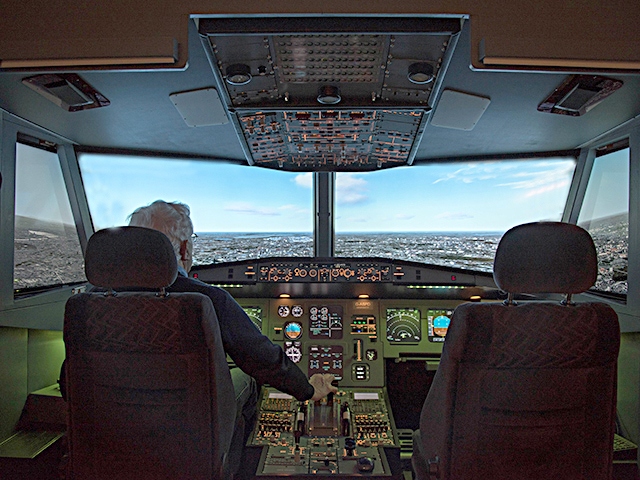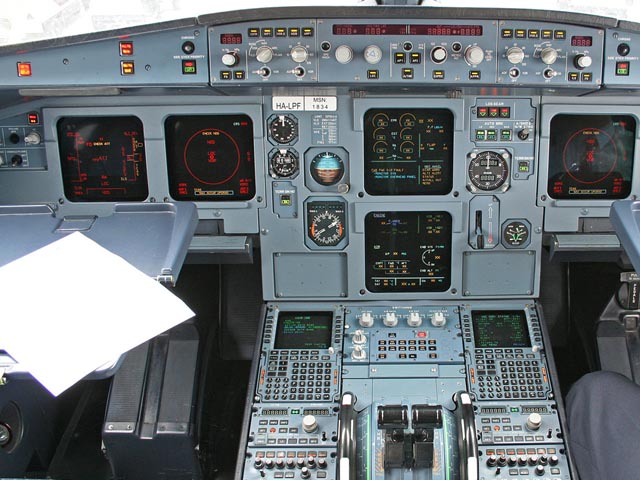|
|
Key FeaturesFull size replica of Airbus A320, can also be configured as A318,A319,A321,A330 and with limitations A340.
All systems replicated to varying degrees; engines, flying controls,hydraulics, airconditioning, electrics, navigation etc. Functioning FMGC and MCDU, full autopilot and autothrottle operation. Online environment, realtime weather, ATC and interaction with other aircraft. Two crew operation. Technical FeaturesFour PC's, six TFT displays plus 2 47" LCD screens for forward views and 2 40" screens for side views. Scope of SimulatorI toyed with the idea of a desktop simulator using Go-Flight panels or similar home made devices. This developed in the thought process to a more realistic cockpit appearance but I decided that the only thing that would satisfy me would be a full size cockpit. I briefly thought about a half cockpit and if space were a problem it would be the way to go. I had, however a number of options on space and felt that a dual seat full replica would be better, I can them teach some of my six grandchildren to fly in a two man crew. I decided to initially produce the main instrument panels, the pedestal and the side panels and get the simulator flying using a monitor for outside display, this would sit in a spare room in the house. I would add the overhead, windscreens and a projector as "phase 2" and move the simulator into the house loft which is an ideal place for the final configuration.
Choice of AircraftTo a certain extent my choice of aircraft was prompted by career experience but also the availabilty of parts as I do not intend to build everything myself. As a very long time retired old gentleman I do not embark on long projects for the same reason that when I get visits from financial advisors telling me I should "take a long term view" I have to point out that I haven't got one.
I quite liked the idea of the HS 125 as I worked at the De Havilland factory when it was being designed and later was my favourite executive jet but there is not much made for the aircraft. I am also a great fan of Concorde, a technical marvel the like of which we will never see again, but the thought of all those analogue gauges is daunting as is the thought that it could be flown single handed. Eventually I had to be realistic about what I could build and have flying within one year; that brought me down to the Boeing 737 or the Airbus A 320. Hardware and software for both types is readily available. I chose the A320 for a number of reasons, the emotional one is that I worked on the first Airbus design (the A300) in 1967 and have been involved in some way with most variants since. The aircraft is technically far more advanced than the 737 but for a simulator this could be a disadvantage as the complexity and antiquity of the 737 cockpit, whilst out of date in the real aircraft world provides a certain vintage charm for a home simulator. The final choice took into account the relative simplicity of the build which will enable me to get flying earlier and cheaper than the 737. The sidestick is far easier to replicate than than the interconnected yoke and column of the 737. The Airbus power lever assembly is far easier and cheaper to produce. The TFT screens are more straightforward. Whilst I chose the A 320 I have no problem understanding why many pilots choose the 737. |


